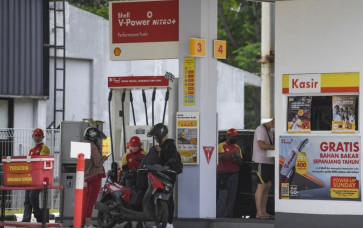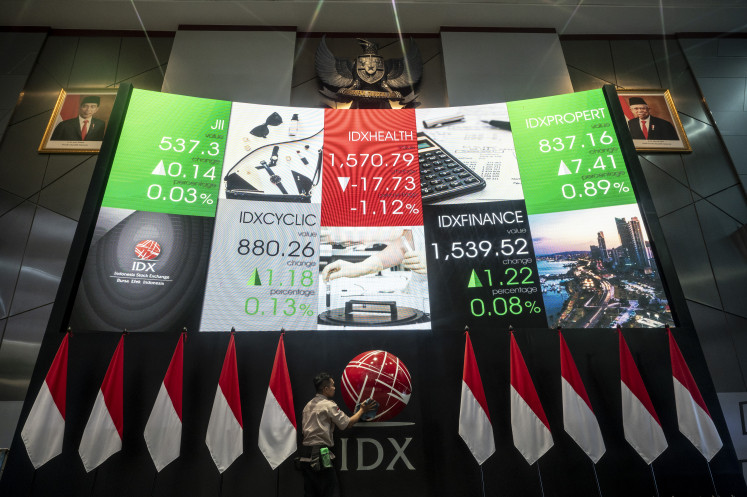Popular Reads
Top Results
Can't find what you're looking for?
View all search resultsPopular Reads
Top Results
Can't find what you're looking for?
View all search resultsBMKG warns of spike in acid rain levels in Indonesia
Rainwater falling in Indonesia may appear clean, but the weather agency recently released a report showing that it contains dangerous levels of pollutants that are harmful to the environment and human health
Change text size
Gift Premium Articles
to Anyone
R
ainwater falling in Indonesia may appear clean, but the weather agency recently released a report showing that it contains dangerous levels of pollutants that are harmful to the environment and human health.
The weather agency categorized polluted rainwater as acid rain with pH levels below tolerable or rainwater pH levels — normally 5.6.
The pH measurement system is used to show how acidic a liquid is, and is on a scale of 0-14. The lower the pH, the more acidic the liquid is.
The Meteorology, Climatology and Geophysics Agency (BMKG)’s report shows that the acidity of rainwater in Jakarta, Bogor, Pontianak and Manado was among the highest in Indonesia.
“A sharp decline in the pH levels of rainwater has affected most areas in Indonesia, with the worst cases recorded in big cities,” Edvin Aldrian, the agency’s climate change and air quality unit chief, told The Jakarta Post on Wednesday.
The data shows that last year the average pH level of rainwater was 4.52 in Jakarta, 4.22 in Manado, North Sulawesi, 4.29 in Pontianak, West Kalimantan and 4.4 in Bogor, West Java.
During the peak of rainy season between January and February last year, the pH levels were far lower than normal in all cities, Edvin said.
In July, the average pH level was between 4.37 and 5.75 with the lowest levels recorded in Manado.
In December, the lowest pH levels were recorded in Bogor at 4.4, while the highest were Surabaya with 6.34.
Edvin said acidity levels were influenced by air pollutants.
“Rainwater brings the pollutants trapped in the atmosphere back to earth, changing the chemical composition of the surface soil and water,” he said.
Many people, mostly in big cities such as Jakarta, rely on surface water from rain or rivers as a source of clean or drinking water because of a lack of access to piped water facilities. In Jakarta, for example, some households inject rainwater into their underground wells to prevent a water crisis when the dry seasons come.
Acid rain can also accelerate the decay of building materials, he said.
Aldrian said sulfur dioxide (SO2) and nitrogen oxide (NO2) in acid rain were the result of the burning of fossil fuels, and are both harmful to humans.
Acid rain pouring into the oceans could also damage coral and fish, he said.
Bogor Agriculture Institute (IPB) soils expert Hermanu Wijaya warned that western Indonesia could suffer massive financial losses from acid rain.
“The presence of acid rain coupled with high rainfalls in western Indonesia could accelerate the release of nutrients into the soil and affect the fertility of soil,” Hermanu told the Post on Wednesday.
“We need concrete actions to stop acid rain, by regulating air pollution levels, otherwise acid rain will render our land barren,” he said.










